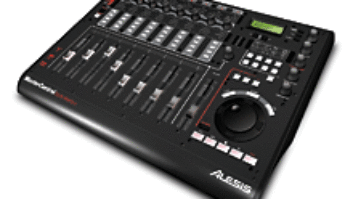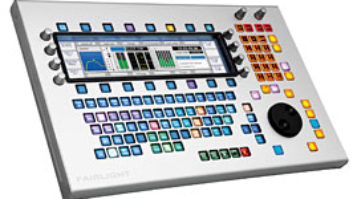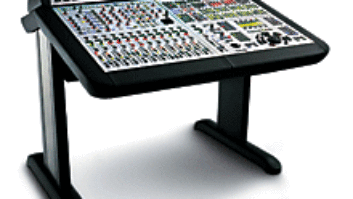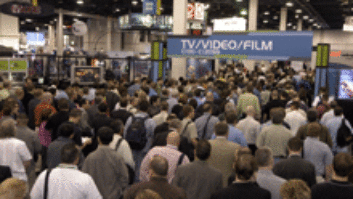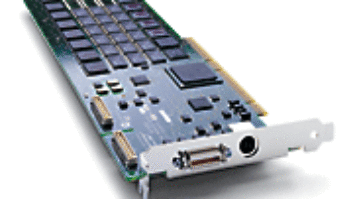In 1988, a team of young designers working in a garage in Silicon Valley founded Euphonix to develop new and different approaches to audio console design. The company’s first product, the CS-1 Crescendo — a high-performance analog console controlled by a digital mixing surface — debuted at AES L.A. two years later. Euphonix has since become a leading manufacturer of large-format digital mixing consoles, disk-based multitracks, and peripherals for live broadcast, TV/film audio post and music production.
At last fall’s AES, one of the more intriguing sights was at the Steinberg booth, where a Euphonix System 5 digital console controlled a Nuendo DAW. Besides underlining the new strategic alliance between Euphonix and Steinberg, the demonstration introduced the Euphonix Control and Operating Network. Known as EuCon, this open architecture network is capable of fully integrating a workstation with a full-function, high-channel-count mixing console. Perhaps more significant, EuCon also offers a relatively painless way to integrate a wide range of audio and control products from different manufacturers in large-scale multiroom applications.
Workstations and large-format consoles have been working side-by-side for years. But the traffic is all one way: The console does not control the DAW itself, only the levels and routing of the workstation’s outputs. If the DAW submix needs to be rebalanced, then the engineer must bring up the DAW interface and tweak as necessary.
“When workstations are connected to big analog consoles, the analog console is generally used only as a monitor mixer; all the processing happens in the workstation,” says Martin Kloiber, Euphonix’s executive VP of technology.
DAW developers have long acknowledged the limitations of a point-and-click mouse interface for sound mixing, and most manufacturers provide either their own hardware controllers or interfaces to those of third-party vendors. But none of the current stand-alone controllers is really practical for large channel-count applications, such as film mixing. Even the best integrated DAW/controller systems face the constant threat of obsolescence as versions get upgraded; keeping all of the integration software current is a coding headache that nobody wants. As a result, most DAW controllers are underfeatured and inflexible, at least in comparison with current digital control surface technology.
This is one of several problems addressed by the Steinberg/Euphonix pact. “Between Euphonix and Steinberg, we have the best of both worlds: a professional control surface with high-quality hardware I/O and a world-class workstation software package,” says Kloiber.
The Nuendo/System 5 integration is made possible by EuCon, which the company offers as a standard feature on its System 5 installations, of which there are now more than 100 worldwide. “EuCon was developed out of necessity to solve particular problems that we ran into as the company grew,” says Euphonix’s director of software engineering, Robert Clayton. As a manufacturer of analog and digital consoles, digital multitrack recorders and a host of ADCs and interface products, Euphonix and its developers know firsthand the pitfalls of point solutions that don’t include an overall connectivity and integration strategy. “When we decided to develop the System 5, the decision was made to solve the problem up front and make that solution scalable,” explains Clayton. “We wanted to know that if the hardware changed, we could easily adapt to that.” The EuCon network architecture, which Euphonix plans to make available to other manufacturers, is therefore set up to recognize and incorporate its various components — mixers, audio sources, record and playback devices, effects units, synchronizers — in generic terms rather than specific ones.
“Each node on a EuCon network has a copy of an image of one or more models, and what EuCon does is assure that the state of all those images is kept identical,” says Clayton. “For example, any changes in fader values are added to the model constantly. There are various models for mixing, editing and control surface functions. If you attach another control surface, it will just add more strips to the console surface model. Another example might be to add a Nuendo system; EuCon would simply create another, say, 16 channels in the mixing model.”
Running over Ethernet or FireWire, EuCon can manage and coordinate very large and complex network implementations. And because of EuCon’s open architecture, many integration scenarios are possible: Once a model of a type of device has been loaded into EuCon, any future device that performs the same functions can be automatically added to the network. Whatever features the new device has to offer — input channels, record/playback tracks, effects, converter channels — are made available to the other nodes on the network, which map the newcomer’s relevant features to their own inputs and outputs. “With EuCon, multiroom post studios can share processing,” notes Kloiber. “They don’t have to put DSP for 200 channels in each room in order to cope with the worst-case scenario. With EuCon, they have movable DSP resources.”
For more information, contact Euphonix, 650/855-0400; www.euphonix.com.
Chris Michie is a technical editor of Mix.
